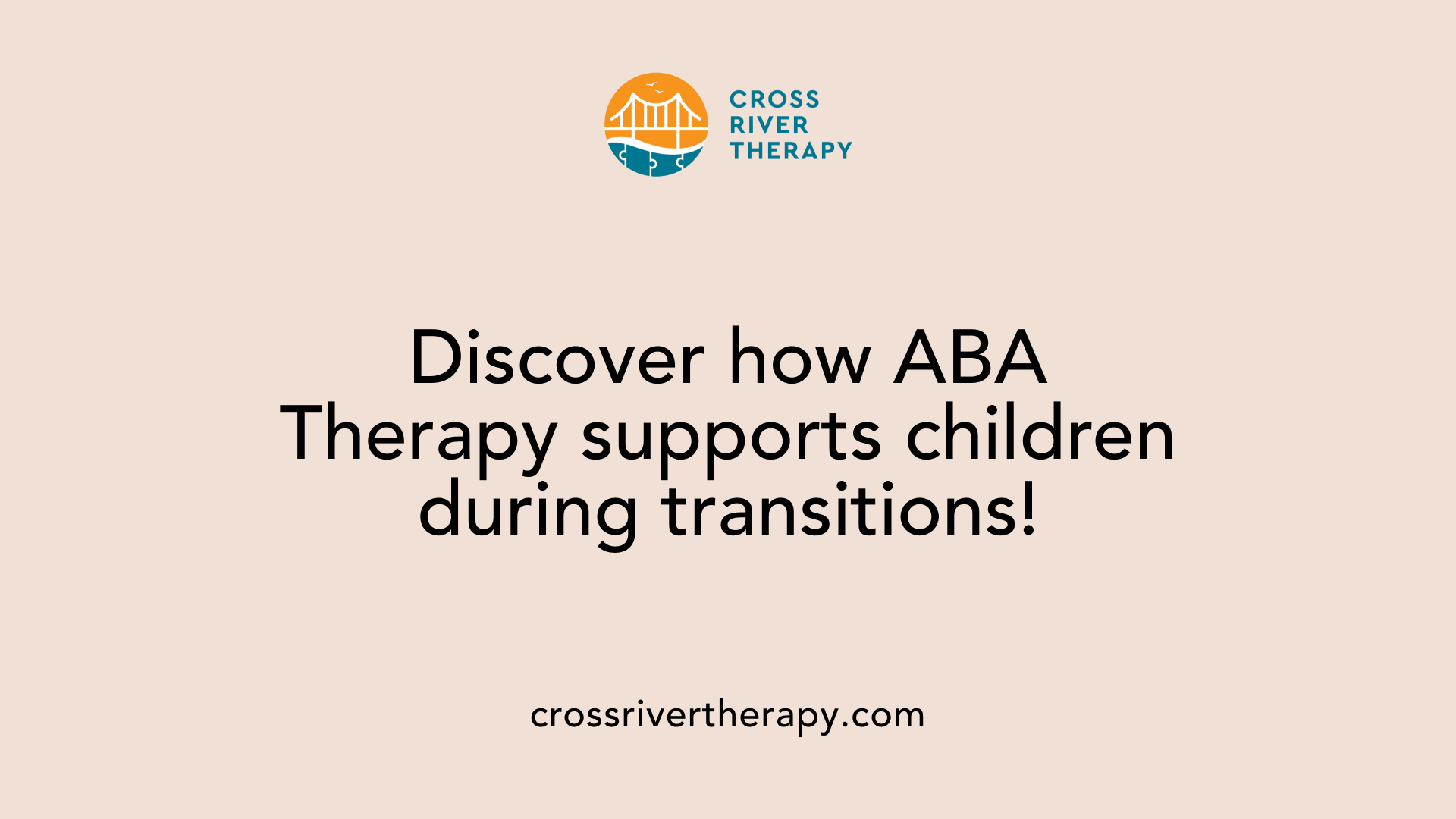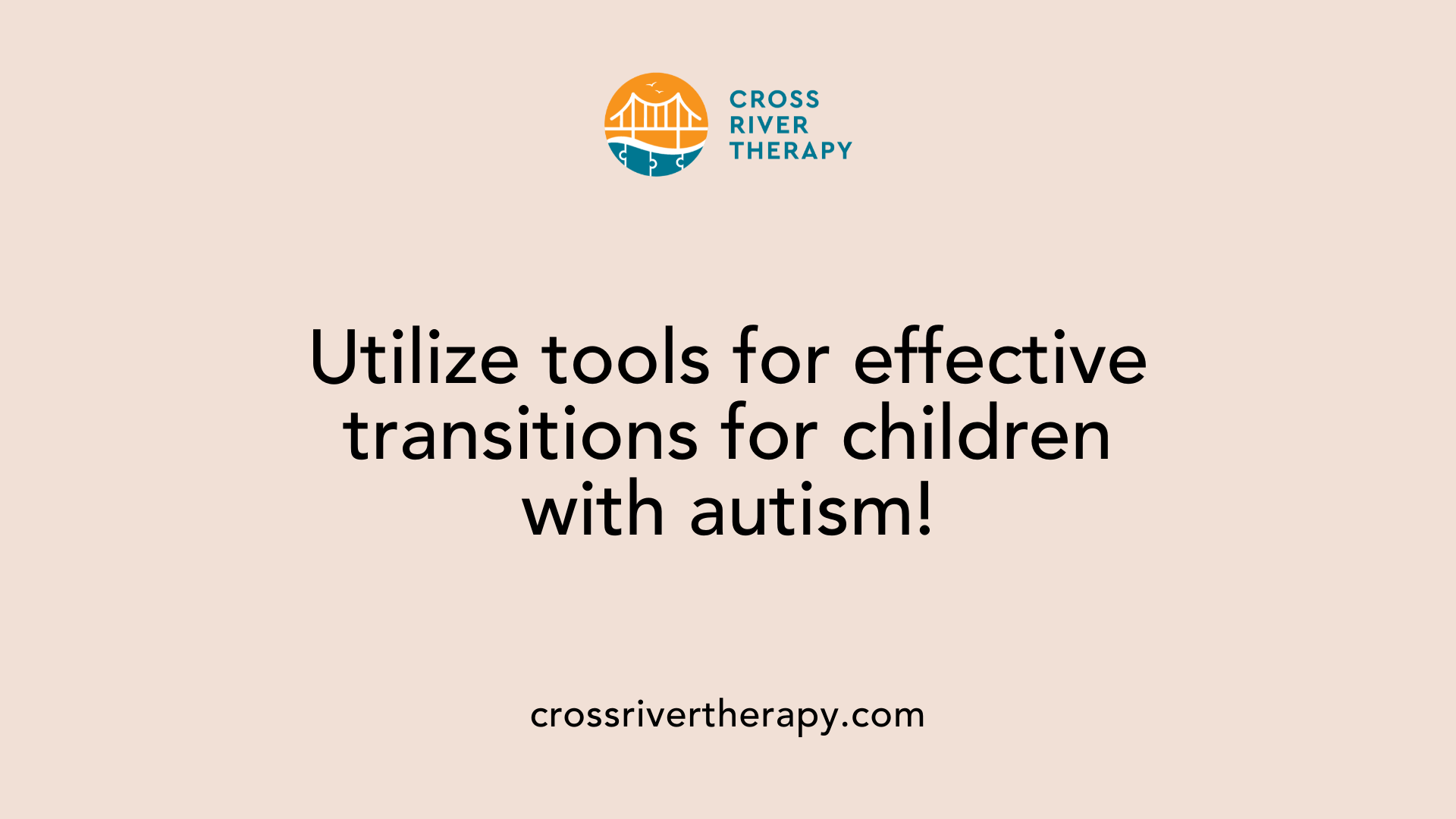How ABA Therapy Helps Children with Autism Manage Transitions
The Role of ABA Therapy in Easing Transitions for Autistic Children
Introduction
Transitions, whether they be minor daily changes or major life adjustments, pose significant challenges for children with autism. Autism Spectrum Disorder (ASD) often comes with a need for predictability and consistency, making any kind of transition potentially overwhelming. Applied Behavior Analysis (ABA) therapy, however, has proven to be an invaluable tool in helping these children manage changes more effectively. With its structured and individualized approach, ABA therapy addresses the unique challenges that autistic children face during transitions, equipping them with the skills necessary for increased independence and reduced anxiety. This article delves into how ABA therapy assists autistic children in managing transitions and explores the strategies and tools that can be employed to facilitate smoother adjustments.
In this article, we will explore:
Understanding the Role of ABA Therapy in Managing Transitions

Benefits of ABA Therapy in Transitions
ABA therapy plays a significant role in helping children with autism manage transitions more effectively. Its structured strategies address the unique challenges these children face, such as anxiety and sensory sensitivities. Techniques like visual schedules create predictability, which is crucial for easing the stress associated with changes in routine.
The use of tools like transition warnings and countdowns prepares children for upcoming activities, allowing them to mentally adjust. Each child benefits from personalized treatment plans that focus on improving communication and social skills, critical for easing frustration during transitions.
Development of Coping Skills through ABA
By incorporating practices such as role-playing and social stories, ABA therapy assists children in building essential coping skills. These methods provide learners with opportunities to visualize and rehearse upcoming social interactions, further reducing their anxiety.
Visual supports, including timers and pictures, enhance understanding, aiding in compliance with transition-related directives. This gradual exposure helps children adapt at their own pace, fostering independence and confidence as they navigate through daily changes.
Key Strategies in ABA Therapy for Transition Management

What are some strategies for applying ABA therapy during transitional periods for children with autism?
Applying ABA therapy during transitions can significantly ease the stress experienced by children with autism. Here are several effective strategies:
Use of Visual Schedules and Timers
Visual supports are vital. For instance, visual schedules help children anticipate the sequence of daily events, thereby reducing anxiety. Visual timers can illustrate how much time is left in an activity, helping children prepare mentally for transitions.Role of Advance Notice and Visual Cues
Providing advance notice about upcoming transitions is essential. Children can better adjust when they know what to expect. Using both verbal and visual cues, such as countdowns or transition cards, reinforces this understanding.Gradual Exposure
Introduce new activities gradually to minimize anxiety. Practice transitions through role-playing or home simulations, which can familiarize children with routines.Personalized Transition Plans
Tailoring transition plans to meet each child's specific needs is crucial. Collaborating with families, educators, and ABA therapists ensures consistency and appropriateness of the strategies employed.Celebrating Milestones
Acknowledging each achievement during the transition process boosts the child's confidence and motivation, making them feel capable in new situations.
Implementing these strategies can create a supportive environment for children with autism, significantly improving their ability to manage transitions smoothly.
Challenges Faced by Autistic Children During Transitions and ABA's Role

What challenges do autistic children face during transitions and how does ABA therapy help?
Children with autism spectrum disorder (ASD) face numerous challenges during transitions that can lead to increased anxiety. These challenges include:
- Changes in Routine: Autistic children find comfort in predictability; unexpected changes can induce distress.
- Sensory Sensitivities: Many children are overwhelmed by loud noises or chaotic environments typical in schools.
- Communication Barriers: Difficulty in expressing feelings and needs can exacerbate anxiety during transitions.
- Social Interaction Difficulties: New social situations can be overwhelming due to challenges in understanding social cues.
- Executive Functioning Issues: Struggles with task-switching and organization can increase stress around transitions.
ABA therapy addresses these issues through structured interventions. Techniques such as visual schedules and social stories prepare children for expected changes, reducing stress and anxiety.
This therapy fosters coping strategies, like deep breathing and the use of sensory tools, to help children manage distress. Additionally, employing priming techniques allows teachers to introduce new concepts and settings gradually, facilitating smoother transitions.
By nurturing vital social skills, ABA therapy enhances children's confidence and adaptability during transitions, providing essential support for navigating the challenges they face.
Methods and Benefits of ABA Therapy in Transition Facilitation

What are the methods and benefits of ABA therapy for facilitating smoother transitions for children on the autism spectrum?
ABA therapy employs various methods to facilitate smoother transitions for children on the autism spectrum. Key techniques include:
- Visual Schedules: These help children anticipate daily activities, reducing uncertainty and anxiety during transitions.
- Transition Warnings: Providing advance notice about upcoming changes prepares children mentally, making transitions less abrupt.
- Social Stories: Tailored narratives explain what to expect in new situations, using simple language and pictures to alleviate anxiety.
- Role-Playing: Practicing transitions through role-play desensitizes children to change, enhancing their comfort in new environments.
The benefits of ABA therapy are substantial. It enhances essential skills, including independent living, communication abilities, and adaptive behaviors. This growth builds resilience and confidence in children, equipping them with tools to navigate life’s challenges effectively.
How does collaboration with parents and educators enhance the benefits of ABA therapy?
Collaboration among therapists, parents, and educators is crucial for consistent support during transitions between home and school. Sharing insights from ABA therapy within the school environment ensures that a child's needs are understood and met. Joint efforts can include:
- Setting up tailored transition plans that incorporate effective ABA strategies.
- Regular communication to update and adjust approaches based on the child’s progress and feedback.
- Preparing the child together for school visits, familiarizing them with teachers and routines to ease anxiety.
Such partnerships not only support smoother transitions but also foster a sense of continuity, helping children feel secure and supported at every stage.
Tools and Structured Support: Aids for Children with Autism During Transitions

What tools and strategies, such as visual aids and structured support, aid children with autism during transitions?
Children with autism face significant challenges during transitions, and various tools can facilitate these changes effectively. Visual aids are particularly beneficial, providing predictability and clarity. They include:
- Visual schedules: These help children anticipate daily events and understand what comes next, reducing uncertainty and stress.
- Visual timers: These tools illustrate the concept of time, helping children see how long they have left for an activity.
- 'First/Then' cards: These simple visual prompts clarify the sequence of activities, making transitions smoother.
In addition to visual aids, social stories play a crucial role in preparing children for new experiences. By using simple language and illustrations, social stories outline what to expect in various situations, such as starting a new school year or meeting new classmates. This proactive approach helps alleviate anxiety by familiarizing children with potential scenarios and appropriate responses.
Consistency is vital in utilizing these aids. Establishing structured routines along with positive reinforcement methods not only aids their understanding but also promotes independence. For successful transitions, collaboration with educators and continuous communication about the child's needs are essential in creating a supportive environment.
Addressing Anxiety and Sensory Sensitivities During Transitions
Role of ABA therapy in anxiety management
Children with autism often face heightened anxiety during transitions, particularly due to changes in routine and uncertainty. ABA (Applied Behavior Analysis) therapy plays a pivotal role in addressing these challenges. It employs individualized intervention plans that focus on understanding and improving specific behaviors. Through techniques such as role-playing and social stories, children can mentally prepare for various school scenarios, minimizing anxiety related to new interactions.
Additionally, implementing visual schedules significantly aids in anxiety management. These schedules create predictability and help children grasp what to expect throughout the day, making transitions smoother.
Sensory-friendly approaches
Many children with autism have sensory sensitivities that make transitions particularly daunting. Strategies like using transition objects and offering gradual exposure to new environments can help ease these challenges. Transition objects provide comfort and a sense of continuity, while gradual exposure allows children to adapt at their own pace.
Collaboration with school staff ensures a consistent approach, utilizing tools like visual timers and cues to aid comprehension during transitions. By employing these sensory-friendly strategies, children are better equipped to handle changes and challenges in their daily activities.
ABA Therapy in School Transitions: A Collaborative Approach
Importance of school and home consistency
For children with autism, maintaining consistency between home and school environments is crucial during transitions. This synchronization helps reduce anxiety and provides a stable framework that allows children to thrive. Collaboration between parents, ABA therapists, and school staff facilitates this coherence.
Parents can share insights from ABA therapy to ensure that strategies used at home are mirrored in school. This can include approaches such as positive reinforcement, visual schedules, and social stories, which support students in understanding expectations and routines.
Practicing school routines at home
Simulating school routines at home is another effective strategy for easing transitions. This practice can include role-playing various school situations, using visual schedules to outline daily events, and implementing transition warnings.
By involving children in these practices, they gain familiarity with the school environment, helping alleviate anxiety associated with new experiences. Parents can also utilize tools like visual timers or countdowns to make the concept of time more tangible, reducing uncertainty about upcoming activities. Through these collaborative efforts, children can better navigate transitions, enhancing their confidence and independence.
Enhancing Social Skills for Better Transition Outcomes
Role-playing and Social Stories in Skill Development
Role-playing and social stories are effective tools used in ABA therapy to develop social skills among children with autism. Through role-playing, children practice real-life scenarios that they may encounter at school, such as interacting with peers or engaging with teachers. This practice can significantly reduce anxiety related to social interactions.
Social stories utilize simple language and visual aids to prepare children for various situations, explaining what to expect and how to respond. By familiarizing them with social scenarios, these tools can alleviate fears and enhance their comfort during transitions.
Social Skills Training Benefits
Social skills training through ABA therapy empowers children with essential communication abilities. This training helps them comprehend social cues, enhancing their capability to engage in conversations. Improved social skills boost confidence, fostering a sense of belonging within the school environment.
Ultimately, as children become more adept at navigating social settings, their overall transition experiences improve. This framework not only assists in immediate school challenges but also lays the foundation for future interactions, making each transition smoother and less anxiety-provoking.
Practical Transition Tools: Visual Timers and Schedules
Usage and Benefits of Visual Timers
Visual timers serve as an excellent aid for children with autism during transitions. They provide a clear and concrete representation of time, helping students anticipate changes in activities more effectively. By using visual timers, children can see the elapsed time, reducing uncertainty about upcoming transitions.
This concrete visualization helps to lower anxiety, allowing children to prepare mentally and emotionally for what’s next. For example, when transitioning from playing to starting homework, a visual timer can help signal the five-minute countdown before the change. This preemptive cue eases stress associated with sudden shifts, promoting a sense of control and predictability.
Implementing Schedules for Daily Use
Visual schedules are another invaluable tool for supporting children with autism through daily transitions. These schedules lay out the day’s activities visually, which empowers children to understand and anticipate their plans.
To implement a visual schedule, consider including:
- Pictures or Symbols: Use simple images representing different activities like lunch, recess, or class time.
- Color Coding: Different colors can help distinguish between types of activities (academic vs. recreational).
- Check-Offs: Allow children to mark off completed tasks, further reinforcing their sense of accomplishment.
Integrating these tools into daily routines not only fosters independence but also diminishes anxiety by providing structure and clarity. Ultimately, structured visuals help children navigate their day more smoothly, making transitions less daunting.
Preparing for Major Transitions: Moving and Vacations
Creating Moving Stories and Environment Familiarity
Preparing for significant changes, like moving to a new house, can be particularly daunting for children with autism. Crafting a moving story that includes pictures of the new home can ease this stress. Utilizing visuals helps children conceptualize the change and reduces anxiety. Incorporating familiar elements from their current environment into discussions can provide a comforting link.
Taking a child to their new home before the move can significantly decrease feelings of anxiety. Familiarization with the new surroundings allows them to explore and understand what to expect, promoting a sense of control over the change.
Involvement in Planning Transitions
Including children in the planning stages of transitions, such as vacations, enhances their comfort level. Participation in packing activities or using calendars to mark important dates allows children to mentally prepare for upcoming changes. They can gain a clearer understanding of what will happen, which alleviates anxiety associated with the unknown.
Involving them in discussions about the vacation activities, such as creating a visual schedule or social stories to outline events, also provides structure. When children feel included in the planning process, their anxieties may decrease, leading to a more enjoyable experience.
Ensuring Long-Term Success Through ABA Therapy
Celebrating milestones and achievements
A vital aspect of transitioning for children with autism is recognizing and celebrating their milestones and achievements. This positive reinforcement fosters an environment of encouragement and boosts the child's self-esteem. Each successful transition, no matter how small, should be acknowledged as a significant step toward greater independence and social confidence. Parents and educators can organize small celebrations or verbal praise to affirm these achievements, making the transition experience more rewarding.
Ongoing assessment and adaptation of ABA plans
To ensure long-term success, ongoing assessment and adaptation of ABA therapy plans are essential. Regular evaluations allow therapists to identify which strategies are proving effective and which need modification. For instance, as children develop and become more adept at handling specific transitions, it may be beneficial to introduce new challenges that further promote their growth. Collaborating with parents and educators to gather comprehensive feedback helps tailor the ABA approach to meet the child's evolving needs, ensuring consistent support throughout various transitions in their educational journey.
Combining the celebration of achievements with adaptable therapy plans empowers children with autism to navigate transitions more effectively, ultimately enhancing their overall quality of life.
Conclusion
ABA therapy provides a structured and compassionate framework to help children with autism navigate transitions more effectively. By employing customized strategies and fostering collaborative efforts among families, educators, and therapists, ABA therapy not only reduces the stress associated with change but also empowers children to develop essential life skills. As families and professionals continue to explore and implement ABA techniques, the potential to transform transitional experiences for autistic children remains promising, highlighting the importance of consistency, predictability, and personalized support. Through careful planning, gradual exposure, and positive reinforcement, children on the autism spectrum can be guided toward more successful and less stressful transitions.
References
- Navigating Back-to-School Transitions for Children with ...
- 10 Strategies to Ease School Transitions for Children with ...
- Autism Transitions and How to Manage Them
- Transition strategies for autistic students
- Managing Transitions for Individuals with Autism
- From ABA Therapy to School: Tips for a Successful Transition
- Improving Transitions in Pediatric ABA Therapy: Strategies ...
- Transition Time: Helping Individuals on the Autism Spectrum ...



